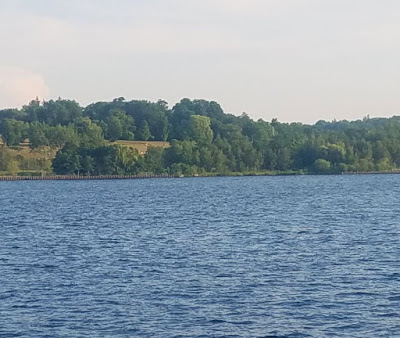* photos taken on July 17 2018
Dufferin County
* photos taken on July 17 2018
Georgian Bay Islands National Park
* photos taken on July 15 2018
Midland
* photos taken on July 15 2018
* Midland enjoys a very mild climate considering it's latitude, it is Plant Hardiness Zone 5b
* Midland - Wye Marsh
Wye Marsh is a 3000 acre wildlife sanctuary consisting of the most prime wetlands in the entire Great Lakes region. The re-established Trumpeter Swan population there is now the largest in eastern North America. The Trumpeter Swans had become extinct in Ontario and most of their global range after severe drops in population due to hunting and habitat loss in the late 1800s and early 1900s. They prefer cattail marsh habitat during the summer, migrating south to bays and estuaries in the winter.
* chillin with Massey Massassauga in the nature center
* original and current range in Ontario of the now globally endangered Massassauga Rattler, It was abundant through much of its original range before populations started to plummet following land clearing and pesecution during the mid to late 1800s. It is now protected but continues to decline due to road vehicle accidents and damage to their winter denning sites whether through construction or changing water table.
* Aquarium Turtles in Wye Marsh nature center
* Trumpeter Swans at Wye Marsh
* original natural range of Trumpter Swans

* Sainte-Marie among the Hurons Ntl Historic Site in Midland
Established in 1639, this heritage site is the oldest European community in Ontario...established by French Jesuits in 1639 as a mission for the Huron Wendat people.
* Martyrs' Shrine in Midland
Orillia
* photos taken on July 17 2018
* Orillia - Leacock Museum
Stayner
* photos taken on July 15 2018
Wasaga Beach
* photo taken on July 15 2018
* wish we stayed here for longer, just stopped here for lunch. It is one of Canada's premier seaside destinations. Check out this video found on youtube for more
* just like Midland; the winters at Wasaga are mild for the latitude but very wet, summers are unusually hot and humid for this far north
* wasaga is within a narrow band of Plant Hardiness zone 5b immediately along Georgian Bay, the plateau to the south is zone 5a ( probably closer to zone 4b in Dufferin County ). The most common trees in Wasaga Beach appear to be Red Oak, American Basswood and White Pine. The soil is deep and very sandy.
























































































































































































































































































































